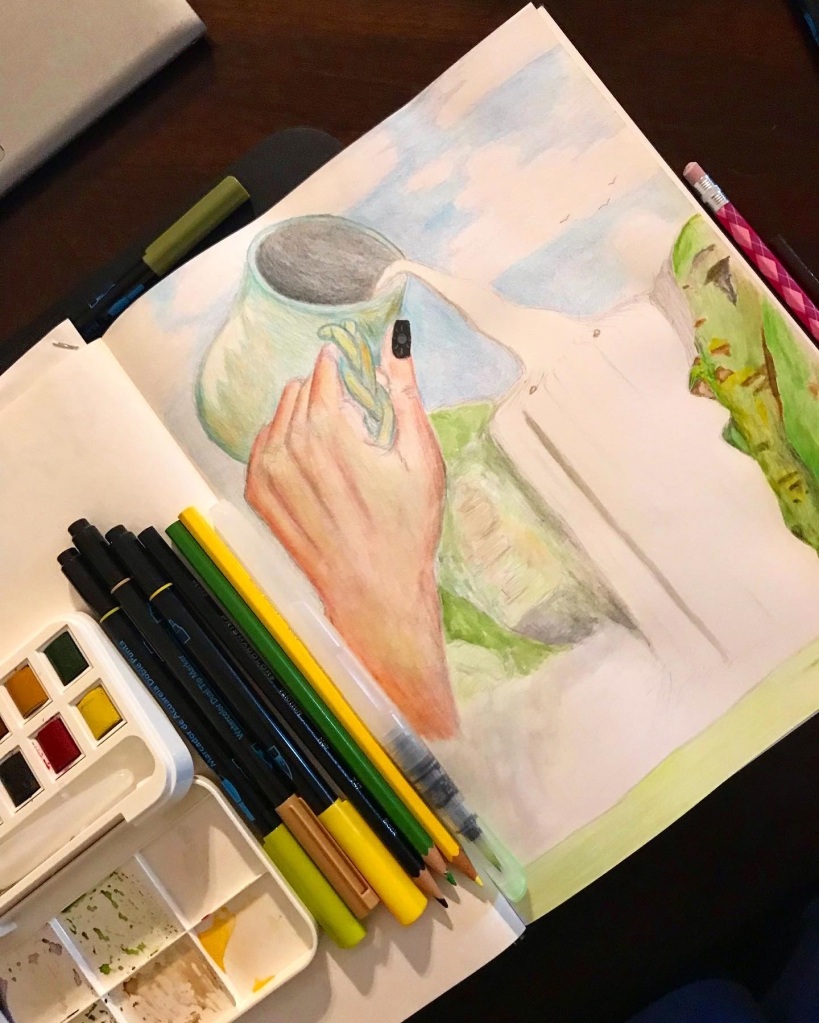My name is Shannan, and I have (a few) silent illnesses.
Some background: In 2014, I was diagnosed with a Grade I ganglioglioma tumor and a seizure condition that came with it. I had that tumor removed. I was in school to be an occupational therapy assistant. I had the tumor removed, had to take a year off school, and eventually was able to finish the program and return to “normal” life.
In 2018, I had a second tumor resection. I was then working as an occupational therapist assistant in an inpatient rehab setting. Again, everything in my life had to come to a complete stand still. Fortunately, this time, I had been working for a few years and had been able to save a bit. What was funny about this experience is a month after brain surgery, I went in for jury duty told the judge about my surgery. She just told me that I “looked fine”.
Then, in 2020, I found out I had stage three endometriosis and had to have a laparoscopy. Another life halt.
Currently, I am dealing with a work related injury to my back. It has been a mental hurtle dealing with my life taking yet another pause. But now, I just want to be able to get back to work and discover other new employment opportunities.
What do all these experiences have in common? These are all deemed “silent illnesses”. A silent illness is one that an observer could easily disregard. Mine come with occasional auras, peripheral neuropathy, aches and pains, and fatigue. I am very fortunate that mine are controlled with medication and overall, have greatly improved. However, coming to a place of peace is difficult.
Here are some tips from my personal experience that helped me move past the diagnosis stage to acceptance stage.
- Stay busy.
When you start looking up your new illness, you learn about symptoms that you have never heard of, or ones you are just now coming to understand. You might even find a community of people suffering from the same illness. But the feelings of worthlessness and disappointment can abound. It is so easy to slip into a depressive state. I’m not even saying you can avoid it. There’s a grieving process that comes with new or recurrent illness. I am not saying this will happen immediately, but build yourself a routine. Especially if this illness or disability is keeping you from working or doing normal activities, find the activities you can perform, and begin building a routine to keep you going. If you find that you have indeed developed symptoms of depression, there is no shame in seeking professional help.
- Spend time with people.
It’s easy to hide away from everyone when you’ve either newly diagnosed or when you’re dealing with the difficulties that can come from a silent illness. But as much as it seems like hiding away is preferable, please, talk to your friends and family. Do not hide away. It’s not worth it. The feelings of helplessness and isolation that come from staying in your own head are are debilitating and it can become difficult to climb out of this habit. But it is so worth it to have a community to support you. And back to the staying busy, find community if you need to. Realize also, that not everyone can handle talking about your difficulties. Some people are just useful to take your mind off what’s happening. We have different people in our lives for different purposes and seasons and we serve a different purpose for others in their lives.
- Learn a new hobby.
Since this time around, I am dealing with an injury that may keep me from my current line of work, my new “hobbies” have been learning new skills to possibly make a career switch. Learning new skills, whether for personal use or for work, can help build up your self confidence again when you don’t feel like yourself.



- Rest.
This might be the most important skill. When I had my laparoscopy, I made the mistake of allowing someone in my life who was trying to start a business to take away my free time, my rest time, to become wrapped up in their flurry of business planning. This was time that I should have used to focus on managing my diet and building healthy routines to help manage my endometriosis symptoms. Rest! I know I just said spend time with people, but certain illnesses do require that you need extra time to be alone and sleep or just not be overwhelmed. Take time to listen to your body and take care of its needs.
- Journal.
I throw this in here, not because it’s a practice that I regularly do, but for certain people, it can be useful. I used to write in a journal all the time, especially when I felt like I had no one to open up to. Now, I feel like my support system takes care of my needs pretty well. I usually talk things out with close friends or family. Afterwards, if there’s something I didn’t feel comfortable sharing, or I’m still mulling over, I use my journal as like the little private pal.
- Exercise.
This point will come with research because everyone their illnesses are different. And of course, talk to your medical doctor to help guide you too. For me, with endometriosis, I can’t do heavy duty exercises anymore because it will set off a flare up and I won’t be able to function for a few days. But even if it’s stretching, light Pilates, or walking around your house for a few minutes at a time, take time to move your body.
I hope that this can be a resource to you. Take care 🖤
Citations:
Gold, Sunny Sea. “What Are Invisible Illnesses?” Health, Health, 6 July 2022, https://www.health.com/condition/autoimmune-disease/invisible-illness.
Kiesel, Laura. “Chronic Pain: The ‘Invisible’ Disability.” Harvard Health, 28 Apr. 2017, https://www.health.harvard.edu/blog/chronic-pain-the-invisible-disability-2017042811360.

